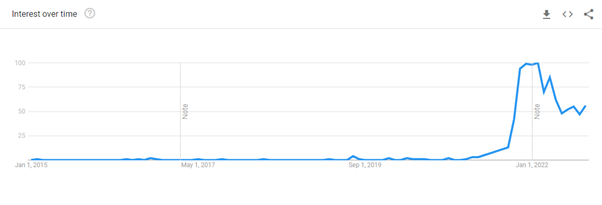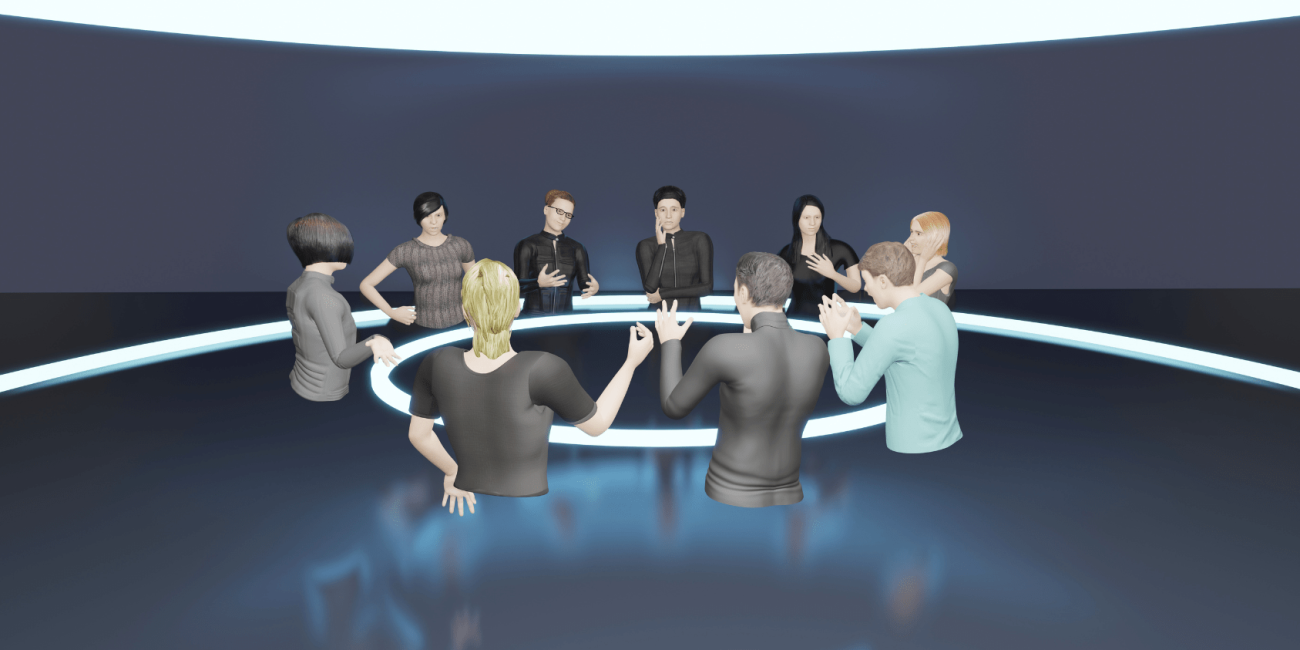
The term ‘metaverse’ was first used in the novel ‘Snow Crash’ in 1982, referring to a 3D world inhabited by avatars of real people. Data from Google Trends (pictured below) shows that the term became popular in the public domain in 2021, around the same time when Facebook changed its name to Meta “to focus on shaping the Metaverse.”

What do we know about the metaverse?
We know that the metaverse is an immersive experience, and currently involves virtual and augmented reality, combining aspects of the physical and digital world. People use avatars in the metaverse to represent themselves and communicate.
What can the metaverse be used for?
The metaverse is becoming increasingly popular in the gaming industry (as seen in Fortnite and Roblox), as well as the corporate world. For example, the metaverse could be used to assist with the onboarding and training of new employees or virtual business meetings.

It can also be used to create, buy, and sell goods (including NFTs) using cryptocurrency such as Ethereum. For example, the high-end, luxury fashion company Gucci created an interactive, virtual exhibit on Roblox, (for a limited time) that allowed users to explore and purchase limited-edition virtual items. Fast forward to June 2022, the company now has its own presence on Roblox, called ‘Gucci Town’ which will have “a broad range of activities that will evolve through time.”
Will the metaverse be the next big thing?
The metaverse is still in the early stages of being built, and there is still some uncertainty what exactly it will look like or when it will go mainstream. However, this virtual world offers new opportunities, particularly for businesses in terms of commerce. It provides a platform to target difficult to reach audiences, such as Gen Z, who seem to be the early adopters of the metaverse. Time will tell whether it will become the next big thing. As it develops in 2023, it will be interesting to see how it will shape our lives and the way we live, work, play and socialise.
Written by Michelle Corry